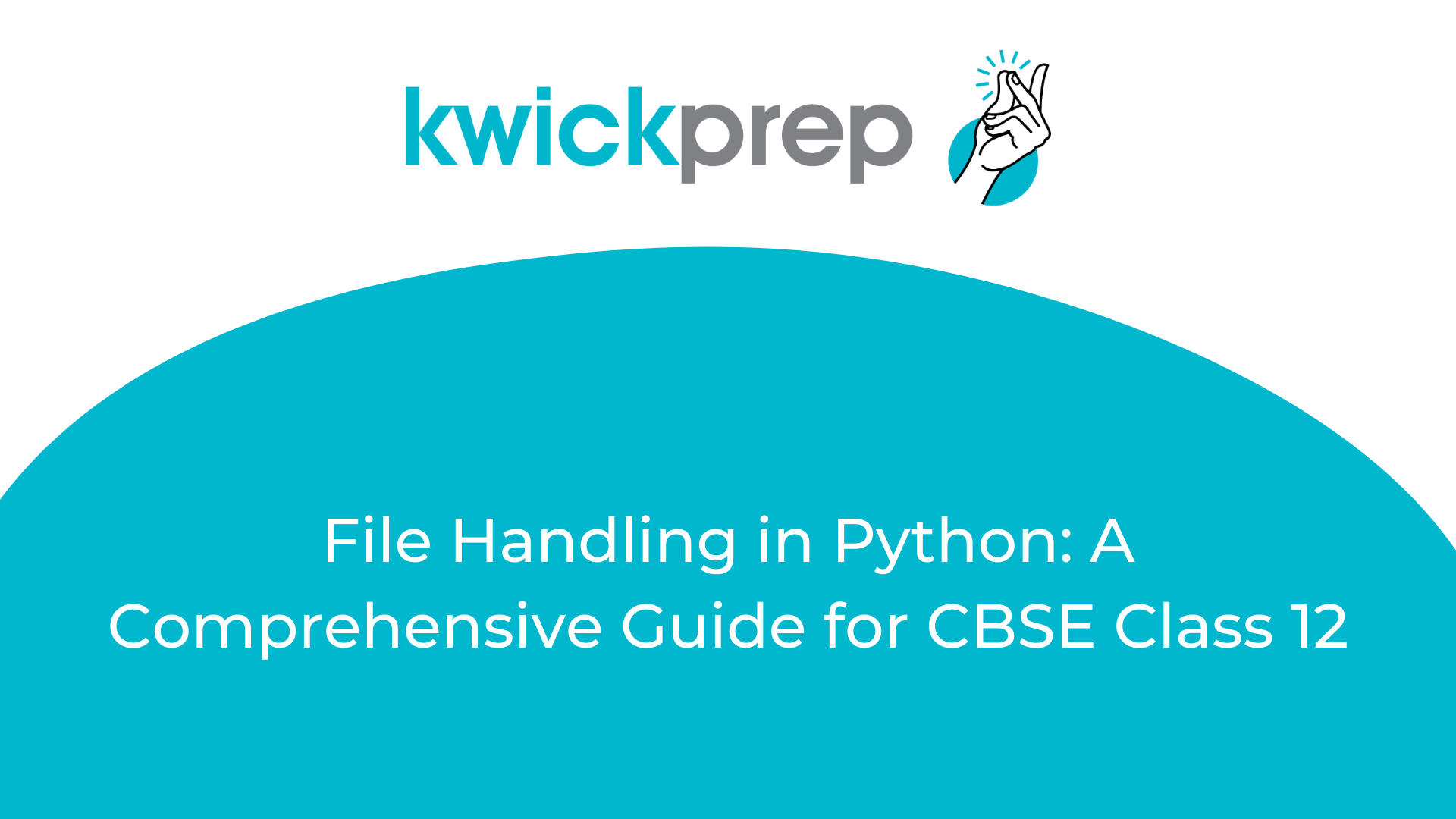Introduction: File handling is an essential aspect of programming, allowing us to store and manipulate data stored on various storage devices. In Python, you can work with two types of files: text files and binary files. In this blog, we will explore the fundamentals of file handling, including file modes, reading and writing functions, standard streams, and more. Whether you are a beginner or preparing for your CBSE Class 12 exams, this guide will help you revise the key concepts effectively.
Understanding Text Files: Text files store information using ASCII or Unicode characters. Each line of text in a file is terminated with a special character known as the End of Line (EOL) character. Python provides several file modes for opening text files, including ‘r’ (read), ‘w’ (write), ‘a’ (append), and ‘rw’ (read and write). These modes determine how you can interact with the file once it is opened.
To open a text file for reading, you can use the following code snippet:
file = open('filename.txt', 'r')
Reading from Text Files: Python offers three main functions for reading text files: read(), readline(), and readlines(). The read() function reads a specified number of bytes from the file and returns them as a string. On the other hand, the readline() function reads one line at a time, while readlines() reads all the lines from the file and returns them as a list.
Here’s an example of reading from a text file:
file = open('filename.txt', 'r') content = file.read() print(content) file.close()
Writing to Text Files: When it comes to writing data to text files, Python provides two primary functions: write() and writelines(). The write() function allows you to write a string to the file, while the writelines() function enables you to write a list of strings to the file.
Consider the following code snippet for writing to a text file:
file = open('filename.txt', 'r') content = file.read() print(content) file.close()
Binary Files: Unlike text files, binary files store information in the same format as it is held in memory. Python supports various file modes for opening binary files, including ‘rb’ (read binary), ‘wb’ (write binary), ‘ab’ (append binary), ‘r+b’ (read and write binary), ‘w+b’ (write and read binary), and ‘a+b’ (append and read binary).
To open a binary file for reading, you can use the following code:
file = open('filename.bin', 'rb')
Standard Streams: Python treats input and output devices as files known as standard streams. The three standard streams are stdin (standard input), stdout (standard output), and stderr (standard error). These streams are useful for interacting with the user and displaying program output.
Path Representation: File paths can be represented in two ways: absolute paths and relative paths. Absolute paths start from the topmost level of the directory structure, while relative paths are based on the current working directory. In relative paths, a dot (.) represents the current directory, and two dots (..) represent the parent directory.
Conclusion: File handling is a crucial skill for any programmer, and understanding how to work with text and binary files is essential. In this blog, we covered the basics of file handling in Python, including file modes, reading and writing functions, standard streams, and path representations. CBSE Class 12 students can use this comprehensive guide to quickly revise the concepts before their exams. Good luck with your preparations!






